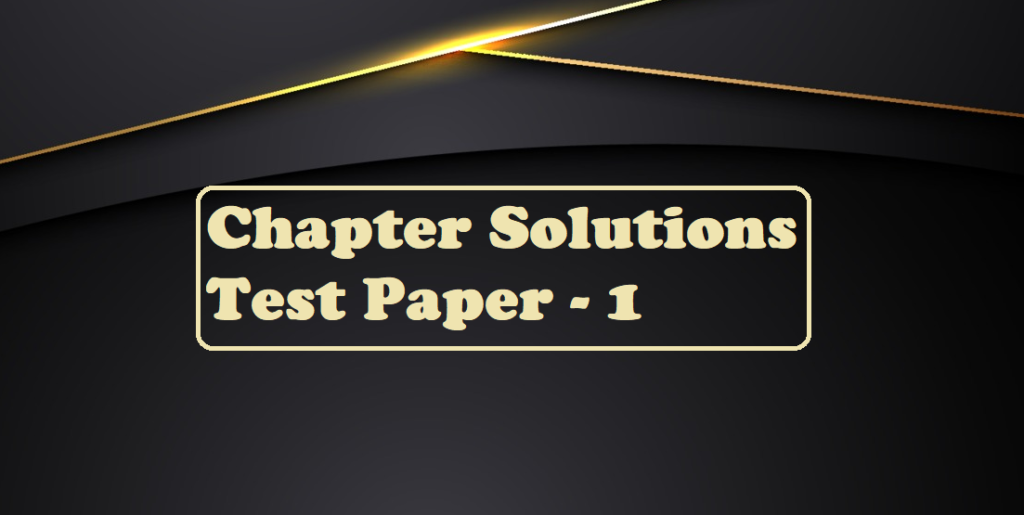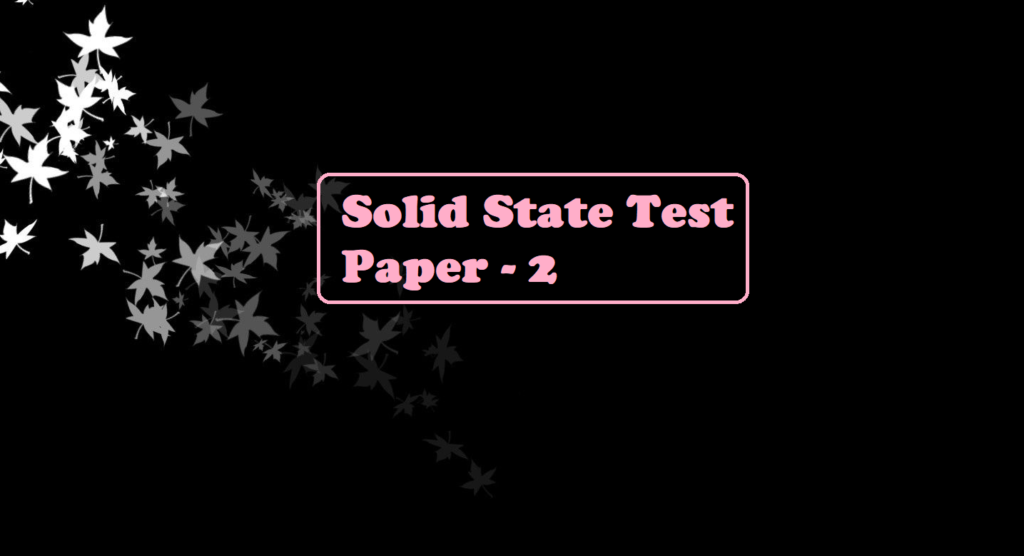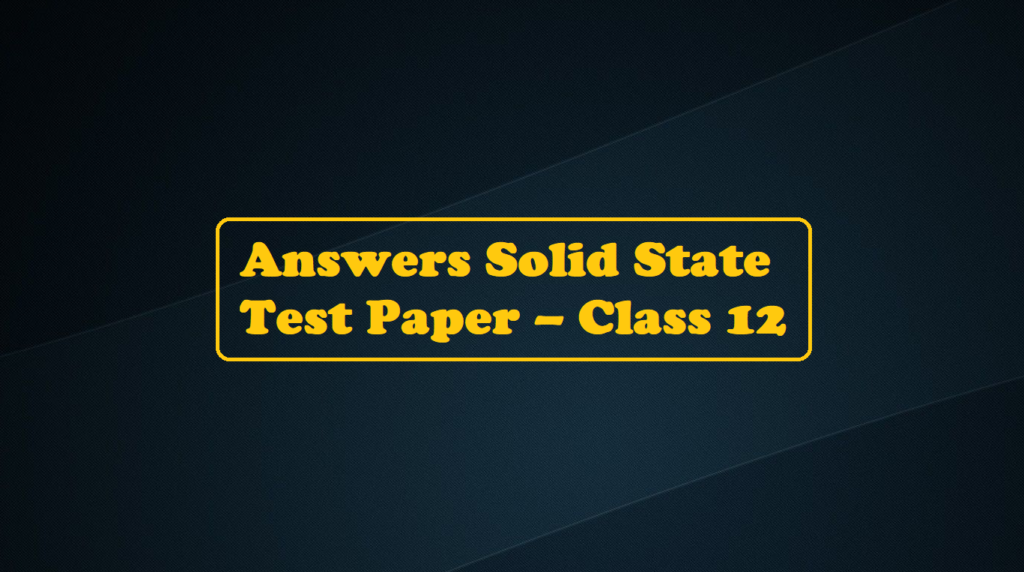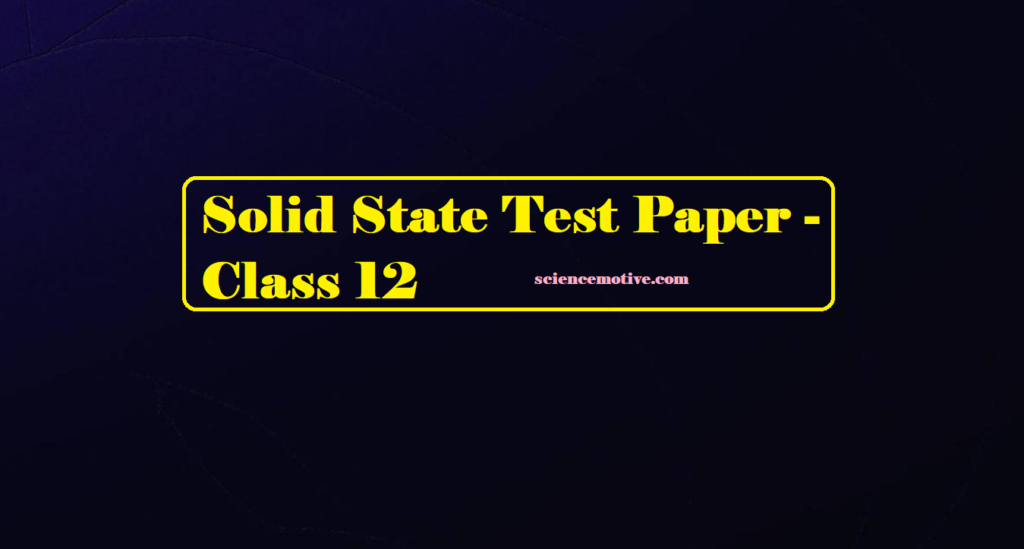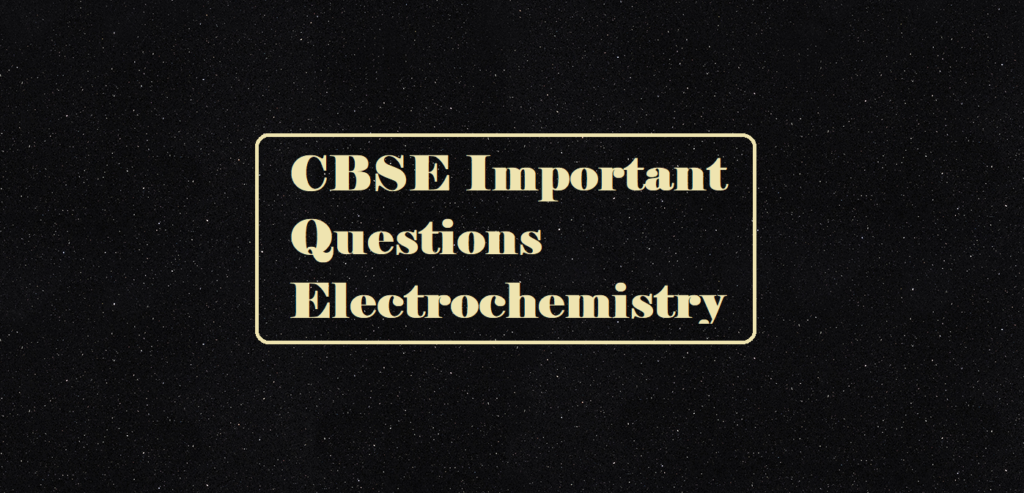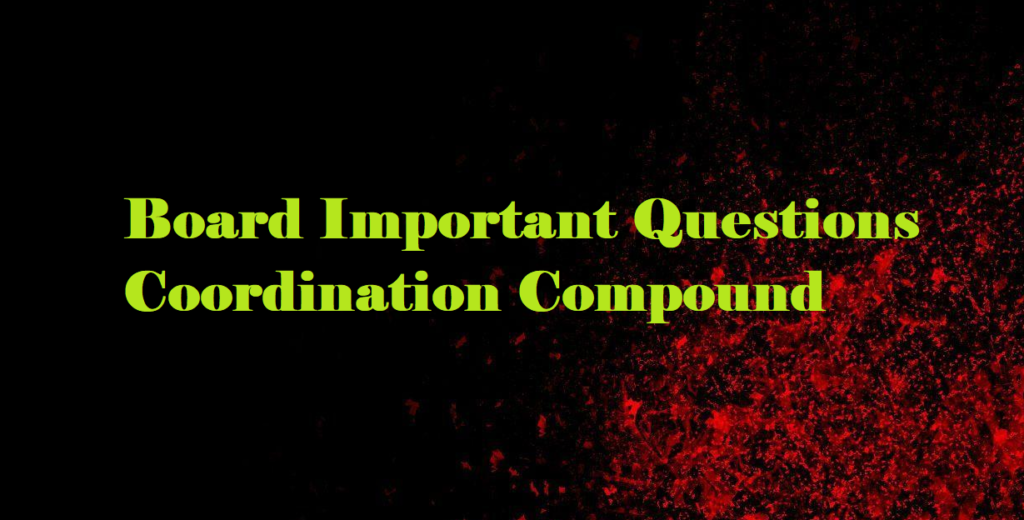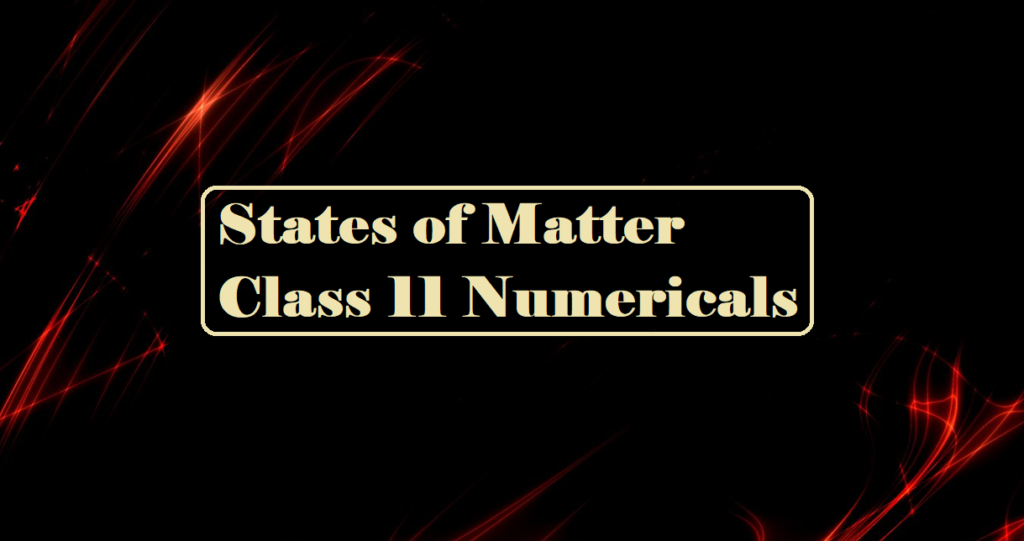Chapter Solutions Test Paper – 1 Chapter Solutions Test Paper Q 1. Concentrated nitric acid used in the laboratory work is 68% nitric acid by mass in an aqueous solution. What should be the molarity of such a sample of the acid if the density of the solution is 1.504 g mL–1? (A) 12.12 mol L–1 (B) 20.12 mol L–1 (C) 16.23 mol L–1 (D) 34.78 mol L–1 Q 2. A sample of drinking water was found to be severely contaminated with chloroform, CHCl3, supposed to be a carcinogen. The level of contamination was 15 ppm (by mass). Determine the…
Author: Dr. Vikas Jasrotia
To get Practice Questions click the post Solid State Test Paper – 2 Answers Solid State Test Paper – 2 Answers Solid State Test Paper – 2 1. (B) 8 2. (B) Covalent 3. (A) Ionic solids 4. (A) Cl– ion form fcc lattice and Na+ ions occupy all octahedral voids of the unit cell. 5. (C) 4 6. (A) Frenkel defect 7. We know for fcc, 2r+ + 2r− = a 2(110) + 2r− = 508 Þ 220 + 2r- = 508 2r – = 508 – 220 = 288 r− = 144pm 8. Let a be the edge…
Solid State Test Paper – 2 Solid State Test Paper – 2 1. The total number of tetrahedral voids in the face-centred unit cell is _____. (A) 6 (B) 8 (C) 10 (D) 12 2. Solid X is very hard. It is an electrical insulator in solid as well as in molten states and melts at extremely high temperatures. Identify the type of solid X? (A) Metallic (B) Covalent (C) Ionic (D) Molecular 3. Point defects are present in (A) Ionic solids (B) Molecular solids (C) Amorphous solids (D) Liquids 4. In which of the following structures coordination number for…
Answers Solid State Test Paper Answers Solid State Test Paper Ans 1. (D). Solid CO2 is an example of a molecular crystal. Ans 2. (C). Atoms along one edge or at corners do not touch each other in the fcc cell. Ans 3. (D). Ans 4. Ans 5. (A). Ans 6. (A). n= N exp (-Ep/2kBT), where N = total atoms, n = Schottky defect are produced by removing n cations, r = anions from the interior of the crystal. Ans 7. (A). The number of atoms per unit cell in simple, face-centered, and body-centered…
Solid State Test Paper Solid State Test Paper Que 1. Solid CO2 is an example of the crystal type – (A) Ionic (B) Covalent (C) Metallic (D) Molecular Que 2. In an f.c.c. unit cell, atoms are numbered as shown below. The atoms not touching each other are (Atom numbered 3 is face centre of the front face). (A) 3 & 4 …
CBSE Important Questions Electrochemistry CBSE Important Questions Electrochemistry Que 1. Why conductivity of a solution does decrease with dilution? Ans 1. On dilution, the number of ions per unit volume decreases thus conductivity decreases. Que 2. If 0.5 ampere current flows through a wire for 2 hours. Calculate the number of electrons through the wire. Ans2. Q = I × t = 0.5 × 2 × 60 × 60 = 3600 C 96500 C is equivalent to charge on 1 mole = 6.022 × 1023 electrons 3600 C is equivalent to charge on = Que 3. How much charge is…
Board Important Questions Coordination Compound Board Important Questions Coordination Compound Que 1. Why are chelates more stable than open complex? Que 2. Anhydrous CuSO4 is white while hydrated CuSO4 is blue. Why? Que 3. Write IUPAC name of [Co(NH3)5ONO]2+. Que 4. Using IUPAC norms, write the formulas for the following. (i) Potassiumtri (oxalato) chromate (III) (ii) Hexammineplatinum (IV) (iii) Tetrabromidocuprate (II) (iv) Pentaamminenitrito N- cobalt (III) Que 5. Account for the different magnetic behaviour of hexacyanoferrate (III) and hexafluoroferrate (III). Que 6. Why is [CoF6]3- is paramagnetic but [Co(NH3)6]3+ diamagnetic in nature? Que 7. Predict the number of unpaired electrons…
States of Matter Class 11 Numericals States of Matter Class 11 Numericals Que 1. Calculate the temperature of 4.0 moles of gas occupying 5 dm3 volume at 3.32 bar. (R= 0.083 bar dm3 k-1 mol-1). Ans 1. PV = nRT T = PV/nR Que 2. A sample of gas occupies 100 dm3 at 1 bar pressure and at 00C. If the volume of the gas is reduced to 5 dm3 at the same temperature, what additional pressure must be applied? Ans 2. Que 3. A mixture of dihydrogen and dinitrogen at 1 bar pressure contains 20% by weight of…
Amines – Quick Key Points Amines – Quick Key Points 1. Amines are alkyl or aryl derivatives of NH3 2. Functional groups of 1º, 2º, and 3º amines are respectively as given below: -NH2, -NH-, -N- | 3. Gabriel phthalimide synthesis can’t be used for the preparation of 2º and 3º amines. It gives aliphatic primary amine only. 4. Hoffmann’s bromamide reaction gives 1º amines having one carbon atom less than parent primary amide. 5. The order of basic strength of aliphatic amines is: (i) Aliphatic amines…
Aldehydes and Ketones – Distinguish Tests Class 12 Aldehydes and Ketones Que. Give simple chemical tests to distinguish between the following pairs of compounds. (i) Propanal and propanone (ii) Acetophenone and benzophenone (iii) Phenol and benzoic acid (iv) Benzoic acid and ethyl benzene (v) Ethanal and propanal (vi) Benzaldehyde and acetophenone Answers: (i) Propanal and Propanone: These two are distinguished by the iodoform test. propanal does not give an iodoform test when it reacts with I2 in the presence of NaOH while propanone gives an iodoform test when reacts with I2 in the presence of NaOH. CH3COCH3 + NaOI → CH3COONa +…
